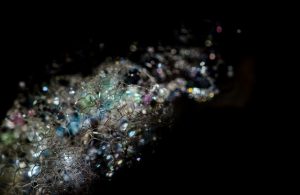Technology is redefining artwork in an odd, new way. Works are made by people going via laser beams or via information accumulated on air pollution.
Where would the Impressionists now be with no creation of mobile paint tubes that allowed them to paint outside? Who’d have known of Andy Warhol with no silkscreen printing? The reality is that technology has been supplying artists with fresh ways to express themselves for a lengthy period of time.
However, over the last couple of years, artwork and technology are becoming more intertwined than ever before, whether it’s through providing new methods to combine various kinds of networking, enabling more individual interaction or just making the practice of art itself simpler. The introduction and use of cloud computing enables technology to transform to art in a personalised manner.
There is a series titled “Digital Revolution” that started earlier this summer in London’s Barbican Centre. The exhibit runs through mid-September and carries a “Digital Archaeology” segment which pays tribute to games and gadgets which maybe not that long ago dazzled us with their own invention. (Yes, a first version of Pong is there, presented as adorable antiquity.) However, the series also comes with a huge array of digital artists that are utilizing technology to push artwork in various directions, often allowing gallery visitors to participate with it in a multi-dimensional manner.

Here are some examples from “Digital Revolution,” of how technology is reshaping what artwork is and the way it’s created.
Let us begin with lasers, the brush stroke of so much electronic art. Among the more popular displays from the London series is known as “Assemblance,” plus it is intended to encourage people to make light structures and floor drawings by proceeding through coloured laser beams and smoke. The tendency for most people would be to operate independently, but the contours they create are far more delicate. If an individual nearby lumps in their arrangement, for example, it is very likely to fall apart. But individuals who collaborate with other people, even if it’s via an act as straightforward as holding hands, find that the mild structures they produce are equally more resilient and more complicated. “Assemblance,” by Usman Haque, among the creators of Umbrellium, the London art collective which made it, says it has a sand castle quality for it, such as a rogue wave, a too aggressive person has the ability to mess everything.
Another popular exhibit in the “Digital Revolution” is an adventure known as “Petting Zoo.” Rather than rubbing adorable goats and furry rabbits, you get to cozy around snake-like tubes dangling out of the ceiling. A slab crane was not needed to set-up the exhibit but the use of slab scissors may have been. These are quite reactive tubes, bending and shifting and altering colours based on how they examine your moves, touch and sounds. They may pull back shyly if they feel a massive group coming or find all cuddly if you are being affectionate. And if you are just standing there, then they may act tired. The immersive art, developed by a design team known as Minimaforms, is supposed to offer a glimpse to the near future, when robots or even artificial pets are going to have the ability to browse our moods and respond in kind.
If Growing Colorspace, an abstract art painted onto the walls of a Berlin gallery, does not look so fantastic at first glance, simply give it a little time. Come back the following day and it’ll appear at least a bit different. That is because the painting is constantly changing, because of that a wall-climbing robot known as a Vertwalker equipped using a paint pen and an application instructing it to follow a particular pattern. The creation of musicians Julian Adenauer and Michael Haas, the Vertwalker, that resembles a flattened iRobot Roomba, is continuously overwriting its own work, biking through eight colours as it warms up perpendicular walls for two to three hours at a time until it requires a battery change. As explained by Haas, the method of production is ideally infinite.
Give Russian artist Dmitry Morozov a little credit, he has invented a means to generate contamination amazing, even though his objective is to make us conscious of just how much is on the market. He constructed a device, complete with a tiny bit of plastic nose, which utilizes sensors which can measure dust as well as other pollutants that are ordinary, including carbon dioxide, formaldehyde and methane. Then, he led out to the roads of Moscow. The detectors translate the information they collect into volts plus a computing platform named Arduino contrasts those liter into shapes and colours, making a picture of contamination. Together via it support services Morozov’s apparatus is able to capture still pictures from the scene and print them out. As irony would have it, the dirtier the atmosphere, the brighter the picture. Exhaust smoke may look especially lively.
